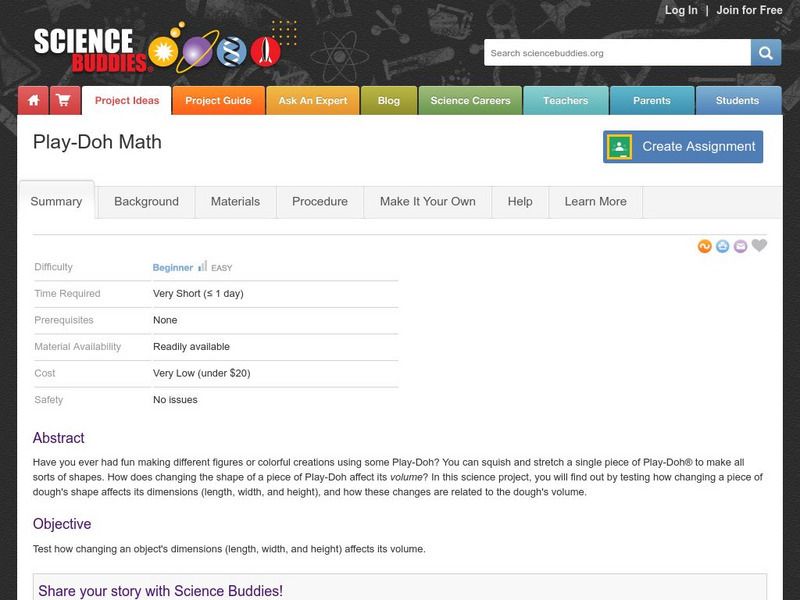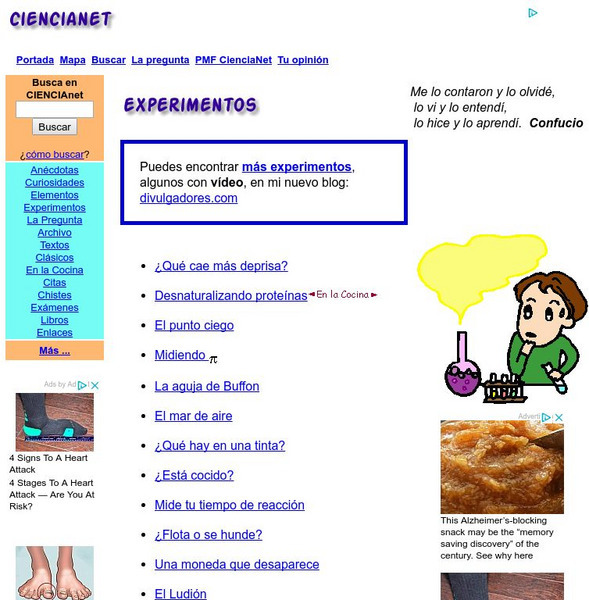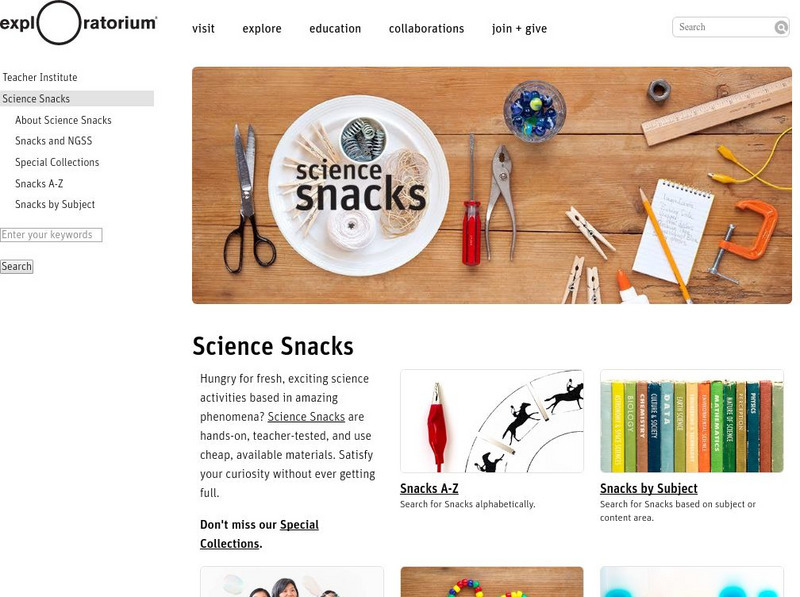EngageNY
TASC Transition Curriculum: Workshop 15
What do a cheetah, Audi commercial, and air have in common? They're all topics of an engaging inquiry-based, hands-on workshop for educators about background knowledge, reading strategies, the CER model, and argumentative writing. The...
Science Buddies
Science Buddies: Estimation and Population Size
Have you ever wanted to take a short cut? How about when doing your math homework? In this experiment you can learn how estimation can save you time doing math calculations. But beware, some estimations are better than others. Can you...
Science Buddies
Science Buddies: M&m Geometry
Geometry is the study of how to use math to describe and investigate different points, lines and shapes. The way that a shape is described in geometry is with a formula, which is simply a mathematical way to calculate different...
Alabama Learning Exchange
Alex: Nocturnal Animals Lesson #7: Spiders
In this lesson students will learn the body parts of a spider and write addition/subtractions sentences using spiders. The class will go on a nature walk to find spiders and spider webs. Finally, the students will complete a science...
Center for Innovation in Engineering and Science Education, Stevens Institute of Technology
Ciese Collaborative Projects: Down the Drain: How Much Water Do You Use?
How much water do you use everyday? Find out in this engaging investigation, where you compare your water usage with your classmates and other people around the world. An exploration filled with lots of math and science that students are...
Science Buddies
Science Buddies: M&m Math
By using a simple bag of M&Ms, you can conduct an experiment in statistics to determine the frequency of colors in the package. The Science Buddies project ideas are set up consistently beginning with an abstract, objective, and...
Science Buddies
Science Buddies: Project Ideas: Crystal Ball Math: Predicting Population Growth
In this environmental science fair project, students will learn some of the ways in which the population growth of animals is modeled, and then use the logistic model to determine how a population grows when it starts far below, at, or...
Science Buddies
Science Buddies: Play Doh Math
One piece of Play-Doh can make many different shapes. Even though you can change the shape by squishing or stretching the Play-Doh, it is still the same size unless you add or take away some of the dough. Try this experiment to test how...
Science Buddies
Science Buddies: Baseball Bat Debate: What's Better, Wood or Aluminum?
Science and math abound in baseball. In this project, you can produce some interesting baseball statistics of your own and perhaps settle a long-standing debate. You'll set up experiments at your local playing field to find out which...
Science Buddies
Science Buddies: How Do Baseball Stadium Dimensions Affect Batting Statistics?
Here's a fun project that combines baseball and math. Major League baseball is played in ballparks that have their own individual quirks when it comes to the exact layout of the field. Fenway Park in Boston has the famous "Green Monster"...
Alabama Learning Exchange
Alex: Building a Cell: Edible Cell Project
Students will create an Eukaryotic cell from materials that they can eat. Students will need to have a instructional activity on the types of Eukaryotic cells and its organelles before they complete this assignment. Students will...
Alabama Learning Exchange
Alex: Camouflage Predation Challenge
Through this simulation, students will understand the role of camouflage in keeping animals from attracting attention of their predators. Using newspaper and patterned wrapping paper, students will construct two habitats. Students will...
Other
The Futures Channel: Problem Solving
"Connecting learning to the real world" is the goal of the Futures Channel. Through the use of short videos, teachers can integrate real-world examples of how math and science are used in everyday life. Complete teaching guidelines...
Other
Smith College: Talk to Me
Experience engineering by applying science and math in the service of humanity through a story. Read the online novel, interact with the characters, and explore some engineering concepts.
Other
The Futures Channel: Proportional Reasoning
"Connecting learning to the real world" is the goal of the Futures Channel. Through the use of short videos, teachers can integrate real-world examples of how math and science are used in everyday life. Complete teaching guidelines...
Alabama Learning Exchange
Alex: Genetic Babies
Middle schoolers will explore Gregor Mendel's laws of genetics in this lesson. Students will be paired in male and female groups. If girls and boys can't be evenly divided, same sex middle schoolers can be paired to represent research...
Other
Ciencianet: Experimentos
Learn Science by doing experiments. In this site you will find thirteen different Physics, Math and Chemistry experiments.
Shodor Education Foundation
Shodor: Deaf Interactivate: Tools (With Text and Asl)
This collection of computational science resources discusses a variety of topics, from fractions to telling time to conducting scientific experiments. Videos provide narration in ASL. Requires Quicktime.
Other
A River Runs Through It Learning Project
In this year long learning project integrating mathematics and science, students solve environmental problems using data collection and problem solving concepts. Designed for upper elementary gifted students. Interactive components and...
Exploratorium
Exploratorium: Snacks
Exploratorium's snacks aren't edible, but they are good! Use your science skills to discover gravity, learn about biology, do fun experiments.
Alabama Learning Exchange
Alex: How Light Travels
In this lesson, the students will be experimenting to show how light shines in a straight line. They will also be experimenting to see how light reflects using mirrors. The students will be working in cooperative learning groups to carry...
Alabama Learning Exchange
Alex: May the Force Be With You!
The goal of this lesson is to provide students with hands on experiences, while learning about magnets. This lesson engages students in experiments which explore magnet use. An emphasis is placed on open-ended questions which encourage...
Alabama Learning Exchange
Alex: What's Your Guess? (Probability)
This lesson will allow the student to experience a series of informal comparisons, The student will explore the chances of various outcomes of an event. The student will use vocabulary associated with probability.This lesson plan was...
Alabama Learning Exchange
Alex: The Five Senses How They Relate to Our World
This lesson will demonstrate and incorporate the use of the five senses. Through hands-on and exploratory experiences, young scholars will gain an understanding of the importance of the five senses. Students will also gain an awareness...






















